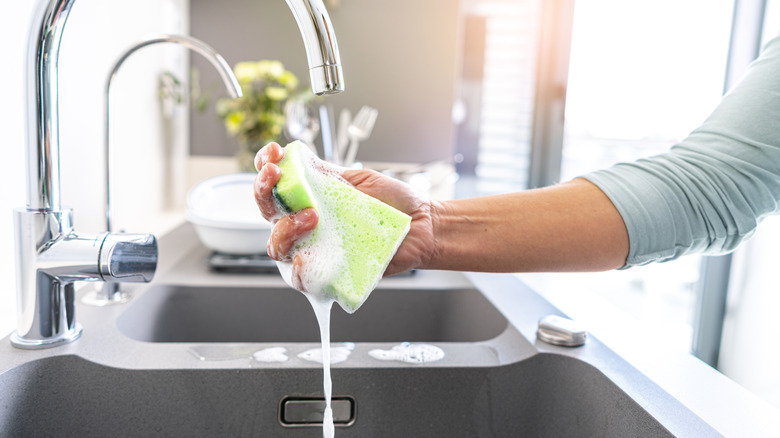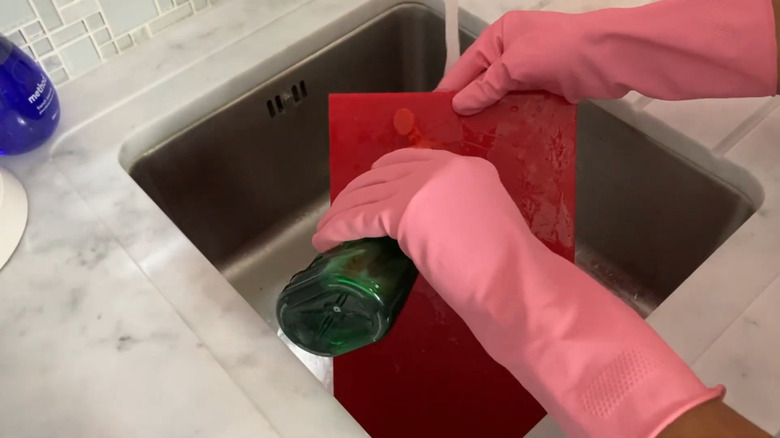The Kitchen Essential You Should Avoid Cleaning With A Sponge At All Costs
When you're cleaning the kitchen after preparing a meal, there's one surface you should never touch with your trusty sponge during your routine: your cutting board. Whether you use a wood or plastic cutting board in the kitchen, it may come into contact with raw meat, quickly becoming a source of cross-contamination. Using a sponge to clean a cutting board can worsen the problem, sopping and spreading any juices remaining after your meal prep. The juice, and any bacteria, don't just disappear when you wring out your sponge. Instead of using a sponge, you should clean your cutting board with a soft cloth and hot, soapy water, and you should wash the cloth after use. Doing so helps keep your board clean and reduces chances of contracting food-borne illness like Salmonella.
That innocent-looking sponge is one of the germiest places in your kitchen, as well as your entire home, according to research by the National Science Foundation (NSF). In their 2011 study "Germiest Places in the Home" examining 22 homes, they found that 75% of kitchen sponges harbored coliform bacteria, the bacteria family of Salmonella and E. coli. All of those pores that help spread the suds you use during washing can also harbor high amounts of bacteria, as the germs hide in the compartments. When you use your sponge to clean a cutting board, you only spread those germs right back onto the board's surface as well as anywhere else you scrub. Next time you need to clean your cutting board, don't reach for the sponge, but follow these easy steps instead.
How to properly clean your cutting board (no sponge required)
Squirt an antibacterial dish soap such as Dawn or other brands on your cutting board, running over it with hot water to suds up. Once you have a nice sudsy surface, use a clean soft cloth or paper towel to scrub the surface of germs, rinse, and let dry. If working with a plastic cutting board, pay attention to any grooves or cuts in the surface, as these can easily trap bacteria. Depending on the manufacturer, you may be able to put your board in the dishwasher's top rack. Consider washing on a low heat setting or removing the cutting board before drying begins to protect it from warping, however. If you prefer bleach, let your cutting board sit in a mixture of 1 tablespoon of bleach per 1 gallon of water to sanitize for a few minutes. Rinse and dry.
If you need to clean a wooden cutting board, avoid submerging or dousing the board with too much water, as this can cause cracking as the wood dries. Some people prefer to use natural ingredients to sanitize a cutting board – including lemon and salt. However, this isn't an appropriate method for sanitizing your board. It's great for removing stubborn smells and leaving a clean, fresh scent but these two ingredients alone won't kill the bacteria. Consider wiping it with a light trace of distilled white vinegar, then letting it air dry to kill any accumulated germs on the surface.

